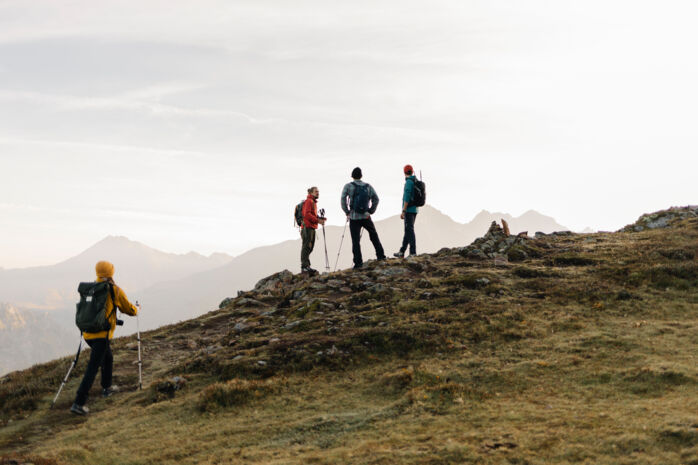
The “Big Five” are not only found in Africa. Also here in the Alps, you can experience them. But we are not talking about elephants and lions, but about ibex, chamois, golden eagle, marmot and bearded vulture. These wild animals have found their home at the Arlberg. With a bit of luck, one or the other animal can be spotted on a hike in the mountains.
The Chamois
The chamois is very spirited and rather shy. By the antlers of the animals one can recognize the age by the annual rings. A chamois has a brown coat in summer and a black coat in winter. In winter it is cold and as we all know black stores warmth best.
The Ibex
The ibex is a very patient and lazy animal. He saves energy for the winter, because this time is very exhausting and demanding for the animal. Furthermore, ibexes are not very shy. Also the age of the ibex can be recognized by the antlers and the annual rings. The ibex stays most of the time at the ridge, because it is windy there and they are not disturbed by annoying flies. One of the largest colonies of ibex in Europe lives in the Zug Valley: over 400 animals call the region around Lake Formarin, the Rote Wand and the Steinerne Meer their home.
The Golden Eagle
The golden eagle is also often called the king of the air. Majestically, it circles with a wingspan of about two metres above the mountain peaks and searches for food. The eagle is a hunter and feeds most often on marmots here in the mountains. It has incredibly good visual skills. The golden eagle has a dark brown feather coat.
The Marmot
The marmot has a very long winter sleep. This can last for over half a year. Immediately afterwards, the “bear season” (mating season) begins in May. The marmot emits different warning whistles. With a human being, it whistles several times, with an eagle or fox, for example, only a very loud warning whistle is given.
The Bearded Vulture
In contrast to the golden eagle, the bearded vulture is a pure scavenger and bone specialist. It feeds almost exclusively on bones. Bearded vultures drop the bones from a great height onto rocks to crush them and obtain pieces suitable for the gorge. An old bearded vulture has a rusty colour, the young one a greyish plumage.

